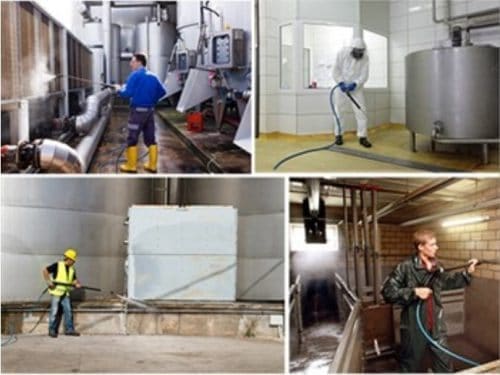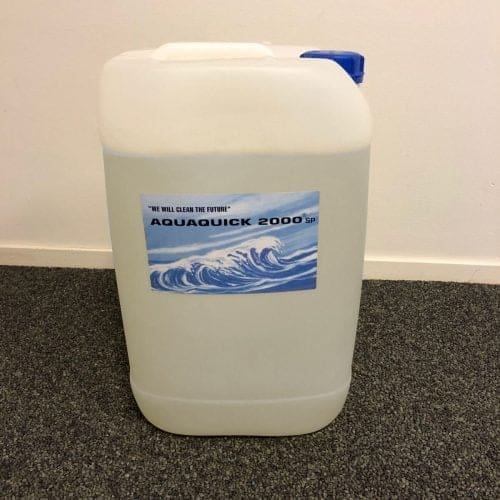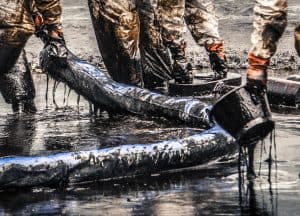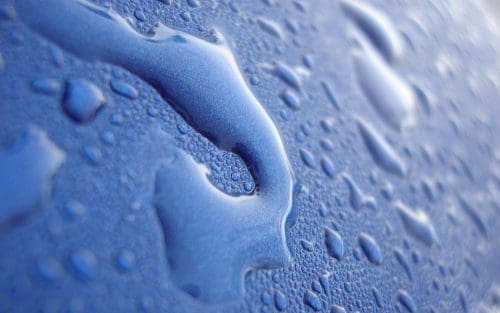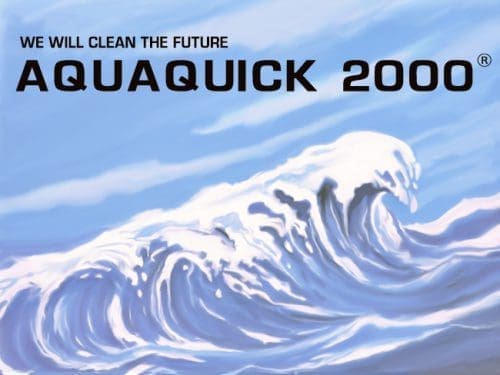I. Introduction
Maintaining cleanliness at gas stations is crucial for ensuring safety and protecting the environment. Gas stations are often bustling places, with customers frequently visiting to refuel their vehicles. However, this high traffic can lead to various hazards, including fuel spills, chemical exposure, and safety risks for both employees and customers. This article will explore the importance of cleaning gas stations, the risks involved, essential cleaning practices, and how using effective products like AQUAQUICK 2000 can help in maintaining a clean environment without compromising safety.
II. Understanding the Risks
A. Common Hazards at Gas Stations
Gas stations are high-traffic areas that are prone to fuel spills, oil leaks, and general grime accumulation. Regular cleaning gas station environments ensures that fuel dispenser areas, restrooms, and customer service zones remain safe, functional, and attractive to customers. Moreover, it reduces the risk of accidents caused by slippery fuel spills and contributes to a safer working environment for employees. Gas stations face several risks that can compromise safety.
1. Fuel Spills
Fuel spills can occur during refueling or due to equipment malfunction. These spills not only pose a slip-and-fall hazard but can also lead to environmental contamination if not managed properly.
2. Chemical Exposure
Gas stations often use various cleaning chemicals that, if improperly handled, can expose employees to harmful substances. Understanding safe handling procedures is vital for reducing health risks.
3. Slips and Falls
Wet surfaces, often caused by spills or rain, increase the likelihood of slips and falls, making proper cleaning and maintenance essential.
B. Environmental Impact of Neglecting Cleanliness
Neglecting cleanliness at gas stations can have severe environmental consequences.
1. Contamination of Soil and Water
Fuel spills and improper disposal of waste can lead to soil and water contamination. This not only affects the immediate environment but can also pose risks to the surrounding community.
2. Air Quality Issues
The evaporation of volatile organic compounds (VOCs) from fuel and cleaning products can contribute to air pollution, affecting the health of nearby residents and employees.

III. Legal and Regulatory Requirements
A. Overview of Regulations Governing Gas Station Cleanliness
Gas stations are subject to various local and national regulations designed to ensure safety and environmental protection.
1. Local and National Laws
Regulations may include requirements for spill response plans, regular inspections, and adherence to safety standards in the handling and storage of hazardous materials.
2. Importance of Compliance
Compliance with these regulations is not just a legal obligation; it also demonstrates a commitment to safety and environmental responsibility.
B. Consequences of Non-Compliance
Failing to adhere to cleanliness and safety regulations can result in serious repercussions.
1. Fines and Penalties
Gas station owners may face hefty fines for non-compliance, significantly impacting their financial standing.
2. Legal Liabilities
In the event of an accident or environmental disaster, non-compliance can lead to legal liabilities, further burdening the business.
IV. Essential Cleaning Practices
A. Daily Cleaning Tasks
For optimal maintenance, daily cleaning gas station tasks should focus on high-traffic areas like fuel dispensers, restrooms, and customer service zones. Sweep and mop floors, clean up any visible spills, and ensure that trash bins are regularly emptied.
1. Fuel Dispenser Areas
The areas around fuel dispensers should be cleaned regularly to remove spills and debris. This not only prevents slips and falls but also minimizes environmental risks.
2. Customer Service Areas
Keeping customer service areas clean enhances the customer experience. Regular cleaning of countertops, floors, and restrooms is essential for maintaining hygiene.
B. Weekly and Monthly Cleaning Routines
In addition to daily tasks, weekly and monthly cleaning routines help maintain a high standard of cleanliness.
1. Deep Cleaning of Surfaces
Weekly deep cleaning gas station should include scrubbing floors, cleaning windows, and sanitizing surfaces. This prevents the buildup of grime and dirt, contributing to a healthier environment.
2. Equipment Maintenance
Regular maintenance of equipment, including pressure washing fuel dispenser areas, ensures that everything operates efficiently and safely.
C. Seasonal Cleaning Considerations
Seasonal changes can impact cleaning gas station routines.
1. Winter Preparation
During winter, it’s essential to ensure that salt and snow are managed properly to prevent damage to surfaces and maintain safety.
2. Summer Maintenance
In the summer, increased traffic may require more frequent cleaning of outdoor areas to manage litter and spills effectively.

V. Choosing the Right Cleaning Products
A. Importance of Using Safe and Effective Cleaners
Selecting the right cleaning products is crucial for ensuring safety and effectiveness.
B. Overview of Products for Gas Station Cleaning
There are various types of cleaning products suitable for cleaning gas stations, each designed for specific tasks.
1. Degreasers
Effective degreasers are essential for removing grease and oil from surfaces. They should be used regularly to prevent buildup.
2. Fuel Tank Cleaners
Fuel tank cleaners, like AQUAQUICK 2000, help maintain the cleanliness of fuel storage tanks, preventing contamination and ensuring optimal performance.
3. Environmentally Friendly Options
Using environmentally friendly cleaning products can significantly reduce the impact on the surrounding ecosystem.
C. Why Choose AQUAQUICK 2000 for Cleaning Gas Stations?
Using AQUAQUICK 2000 at gas stations offers several advantages:
- Effective on Hydrocarbons: Its specialized formula makes it highly effective for cleaning fuel, oil, and grease spills, which are common at gas stations.
- Eco-Friendly: Since it is biodegradable, AQUAQUICK 2000 minimizes the environmental impact of cleaning operations, helping gas stations comply with environmental regulations.
- Safe for Users: It is non-toxic, making it safe for employees to handle without the need for extensive protective equipment.
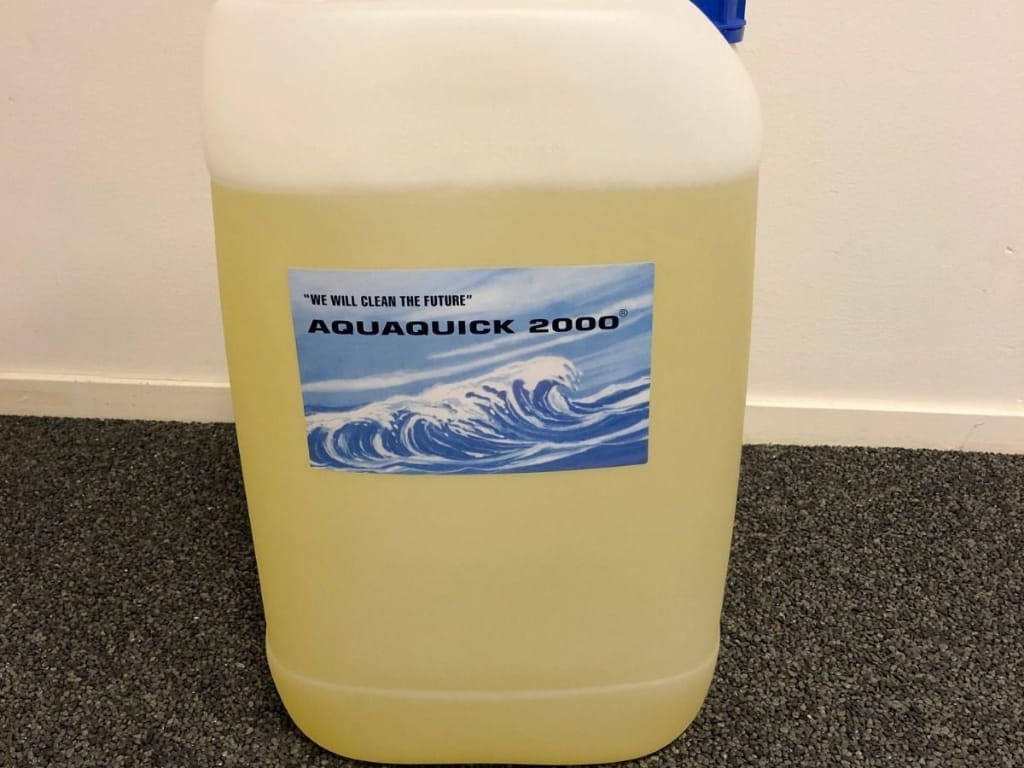
VI. Training Staff for Safety
A. Importance of Employee Training
Training employees in proper cleaning techniques and safety procedures is vital for minimizing risks at gas stations.
B. Key Training Topics
Effective training should cover several key topics.
1. Handling Spills
Employees should be trained in how to respond to fuel spills quickly and safely. This includes knowing the proper containment methods and the use of absorbent materials.
2. Safe Use of Cleaning Products
Understanding how to handle and apply cleaning products safely can prevent accidents and reduce exposure to harmful chemicals.
3. Emergency Response Procedures
Training employees in emergency response procedures ensures they are prepared to handle incidents effectively, reducing potential harm to themselves and customers.
VII. Creating a Cleanliness Protocol
A. Developing a Cleaning Schedule
Creating a structured cleaning schedule helps ensure that all areas are maintained regularly.
B. Assigning Responsibilities
Assigning specific cleaning responsibilities to staff members promotes accountability and ensures that tasks are completed efficiently.
C. Monitoring and Evaluation of Cleaning Efforts
Regularly evaluating cleaning efforts can help identify areas for improvement and ensure that standards are maintained.
VIII. The Role of Technology in Cleaning
A. Innovative Cleaning Equipment
Investing in innovative cleaning equipment can enhance cleaning efficiency. Equipment like pressure washers and automated scrubbers can significantly reduce the time and effort required for maintenance.
B. Software for Tracking Cleaning Schedules
Using software to track cleaning gas station schedules ensures that tasks are completed on time and helps maintain accountability among staff.
C. Benefits of Technology in Maintaining Safety and Cleanliness
Incorporating technology into cleaning processes can lead to improved safety and cleanliness, allowing gas stations to operate more efficiently.
Conclusion
In conclusion, cleaning gas stations is vital for ensuring safety and protecting the environment. By understanding the risks, complying with regulations, implementing essential cleaning practices, and using effective products like AQUAQUICK 2000, gas station owners can create a safer environment for employees and customers alike.
For gas station owners, the time to prioritize cleanliness is now. Investing in effective cleaning solutions and training staff on best practices not only enhances safety but also contributes to a cleaner environment. Explore innovative products like AQUAQUICK 2000 and develop a robust cleaning protocol today to ensure the longevity and reputation of your gas station.



